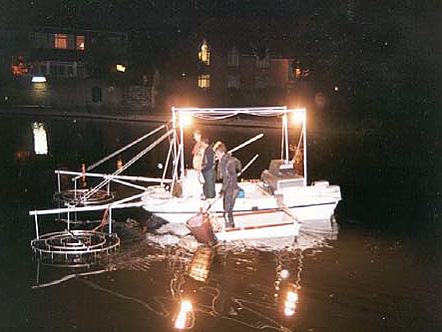The Environment Agency Thames West region report that the annual River Thames electrofishing Boom Boat surveys produced some of the best fish numbers of recent years with 17 different fish species caught between Oxford and Hurley and nearly 8000 fish caught in total. The diversity of fish species on the Thames was shown to be excellent, but the one species that appeared to be ‘fin and tails’ above all of the other species was the roach!
There were just under 6000 roach caught on the surveys ranging from fish of a few ounces to fish of well over the pound mark, with the real hotspots around Caversham, Abingdon and Henley. There were no areas that were really poor and anglers could realistically expect to catch roach all the way from Oxford to Hurley, with some really nice quality fish showing.
The numbers of smaller roach were very encouraging and the EA say that anglers should expect excellent roach catches to continue over the next few years and go on to suggest that the mighty Thames could even become THE roach Mecca in the country!
So just what has produced this roach explosion?
 The EA explain that the Thames is very different in all its individual reaches, tributaries, islands, marinas, backwaters and floodplain connectivity all of which contribute to the Thames in their own way. This normally leads to different results from one reach to another, the common theme this year is the sheer number of roach that have been caught in all the reaches surveyed.
The EA explain that the Thames is very different in all its individual reaches, tributaries, islands, marinas, backwaters and floodplain connectivity all of which contribute to the Thames in their own way. This normally leads to different results from one reach to another, the common theme this year is the sheer number of roach that have been caught in all the reaches surveyed.
A good example of this is the Hambleden stretch. This is a stretch that normally produces a few larger fish, pike and carp are normally on the cards, with smaller silver fish few and far between. This year 738 roach were caught and the site produced the highest numbers of dace caught on the Thames surveys this year.
The low flows over the last few years are something that impacts all the reaches of the Thames though and this impacts different species in different ways. What it does mean is that the smaller fish born in the spring do not have to fight against high flows, food availability is much higher and the shallow areas of the river are much warmer. All this adds up to a much fitter healthier fish that can combat the rigors of their first winter that much better. This means that more fish born that year survive their first winter, which in turn means more fish to be caught!










